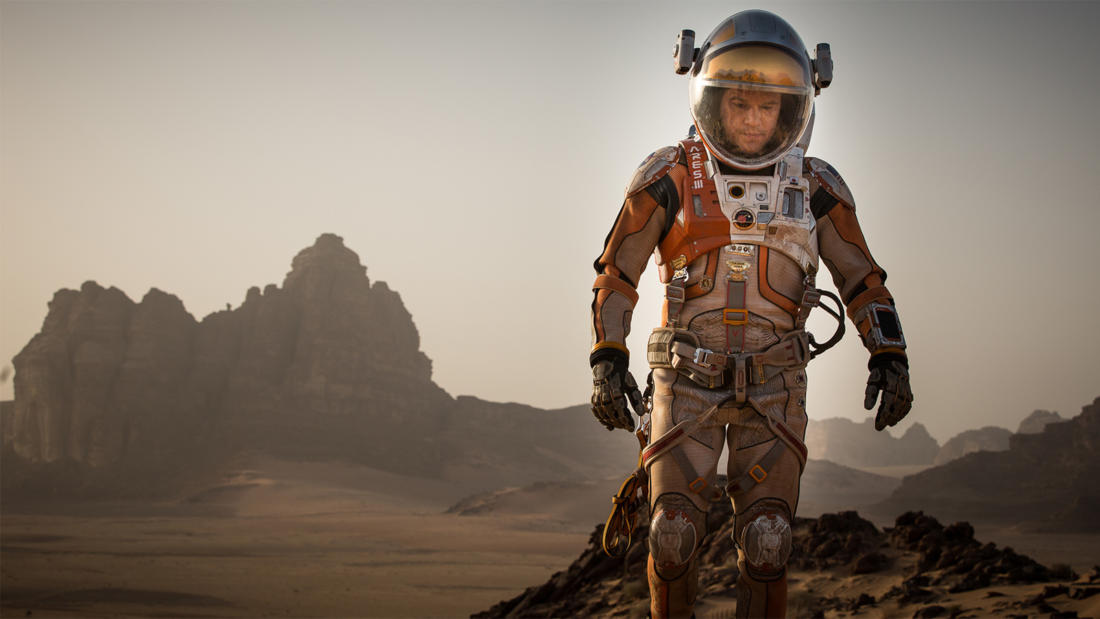
Honolulu Museum of Art Honolulu, HI
Kimberly Binstead
Professor of Computer and Information Sciences, University of Hawai'i at Manoa; Principal investigator, Hawaii Space Exploration Analog and Simulation
The Martian— Simulating long-duration space exploration
Program Description
In an isolated former quarry on Mauna Loa—a site eerily similar to the surface of Mars—scientists field-test the technologies and procedures astronauts will need to live and work on another planet. Principal Investigator Kim Binsted introduces the HI-SEAS (Hawaii Space Exploration Analog and Simulation) program and explains how it is helping NASA prepare for long-duration human space exploration.
Presented At
Honolulu Museum of Art Honolulu, HI
Film Synopsis
When astronauts mistakenly leave Mark Watney behind on Mars, the stranded visitor must use his wits, spirit, and scientific know-how to find a way to survive on the hostile planet.
During a manned mission to Mars, Astronaut Mark Watney (Matt Damon) is presumed dead after a fierce storm and left behind by his crew. But Watney has survived and finds himself stranded and alone on the hostile planet. With only meager supplies, he must draw upon his ingenuity, wit, and spirit to subsist and find a way to signal to Earth that he is alive. Millions of miles away, NASA and a team of international scientists work tirelessly to bring "the Martian" home, while his crewmates concurrently plot a daring, if not impossible, rescue mission. As these stories of incredible bravery unfold, the world comes together to root for Watney's safe return. Based on the best-selling novel by Andy Weir, and helmed by master director Ridley Scott, The Martian was nominated for three Golden Globes.
About the Speaker
Kim Binsted is the principal investigator for the NASA-funded HI-SEAS (Hawaii Space Exploration Analog and Simulation) program, which conducts long-duration space exploration simulations at an isolated habitat on Mauna Loa. She received her BSc in physics at McGill (1991) and her PhD in artificial intelligence from the University of Edinburgh (1996). Her thesis topic was the computational modeling and generation of punning riddles, and her program, JAPE (Joke Analysis and Production Engine), generated puns such as "What do you call a Martian who drinks beer? An ale-ien!" She then went to Japan, where she conducted research at Sony's Computer Science Laboratories on human-computer interfaces, and then started a company, I-Chara KK, which developed social software agents for mobile phones. In 2002, she joined the faculty of the Information and Computer Sciences Department at the University of Hawai‘i, where she does research on artificial intelligence, human-computer interfaces, and long-duration human space exploration.
Kim is a co-investigator at the UH-NASA Astrobiology Institute, which formed in late 2003. She was a NASA Summer Faculty Fellow at Ames Research Center in 2003 and 2004, where she worked on sub-vocal speech recognition technology in the Neuroengineering Lab. She was Chief Scientist on the FMARS 2007 Long Duration Mission, a four-month Mars exploration analogue on Devon Island in the Canadian High Arctic. In 2009, she spent her sabbatical as a visiting scientist at the Canadian Space Agency (CSA), working on the CSA's planetary analogues program.